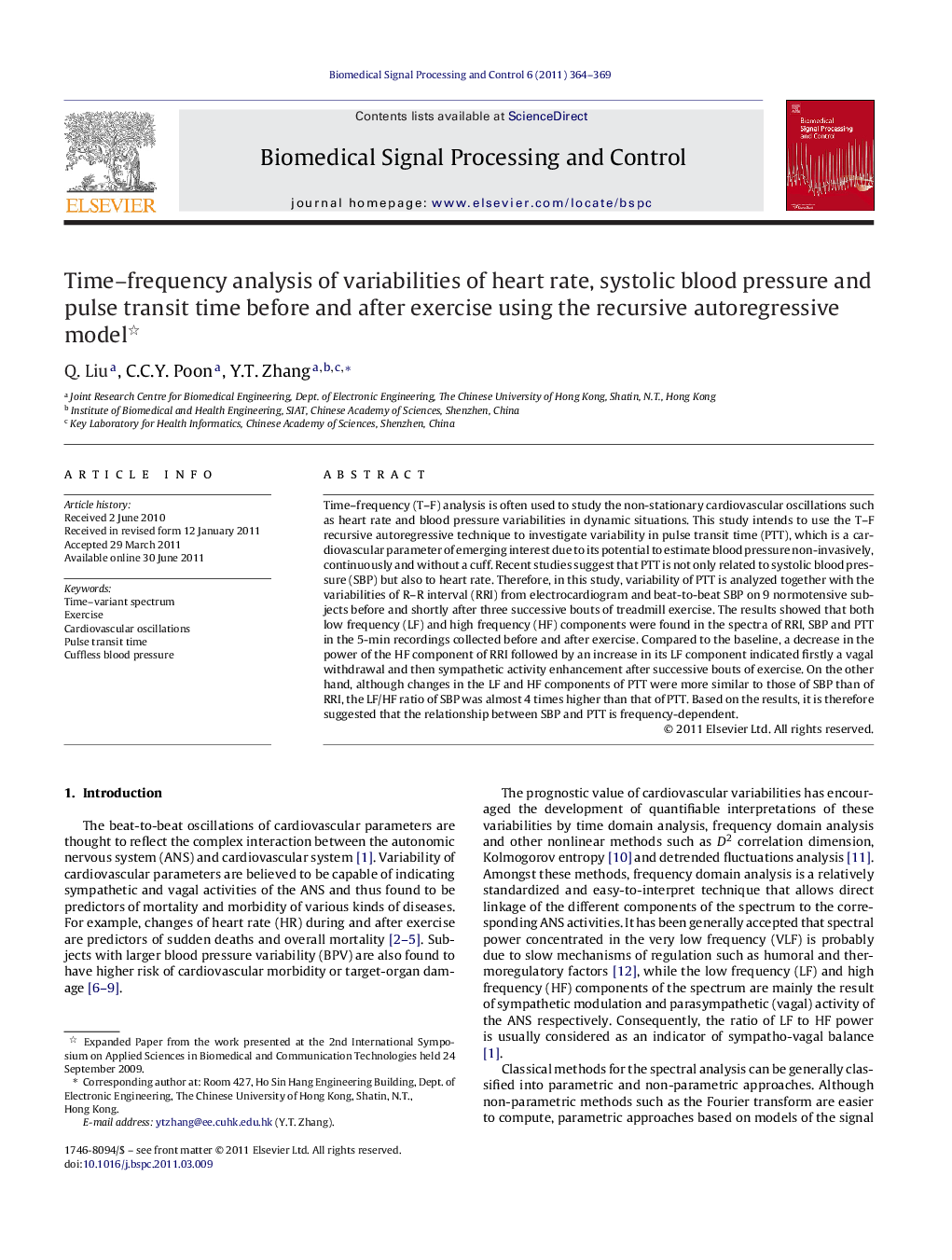| Article ID | Journal | Published Year | Pages | File Type |
|---|---|---|---|---|
| 558044 | Biomedical Signal Processing and Control | 2011 | 6 Pages |
Time–frequency (T–F) analysis is often used to study the non-stationary cardiovascular oscillations such as heart rate and blood pressure variabilities in dynamic situations. This study intends to use the T–F recursive autoregressive technique to investigate variability in pulse transit time (PTT), which is a cardiovascular parameter of emerging interest due to its potential to estimate blood pressure non-invasively, continuously and without a cuff. Recent studies suggest that PTT is not only related to systolic blood pressure (SBP) but also to heart rate. Therefore, in this study, variability of PTT is analyzed together with the variabilities of R–R interval (RRI) from electrocardiogram and beat-to-beat SBP on 9 normotensive subjects before and shortly after three successive bouts of treadmill exercise. The results showed that both low frequency (LF) and high frequency (HF) components were found in the spectra of RRI, SBP and PTT in the 5-min recordings collected before and after exercise. Compared to the baseline, a decrease in the power of the HF component of RRI followed by an increase in its LF component indicated firstly a vagal withdrawal and then sympathetic activity enhancement after successive bouts of exercise. On the other hand, although changes in the LF and HF components of PTT were more similar to those of SBP than of RRI, the LF/HF ratio of SBP was almost 4 times higher than that of PTT. Based on the results, it is therefore suggested that the relationship between SBP and PTT is frequency-dependent.
